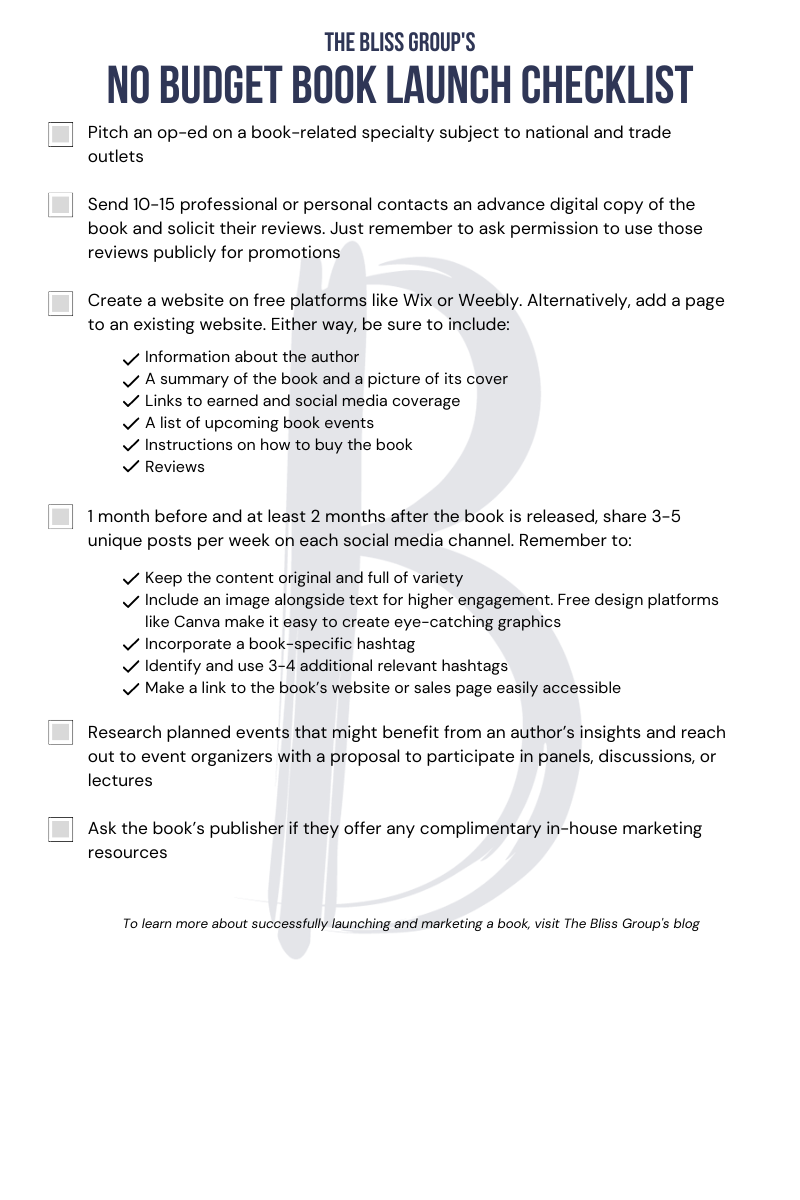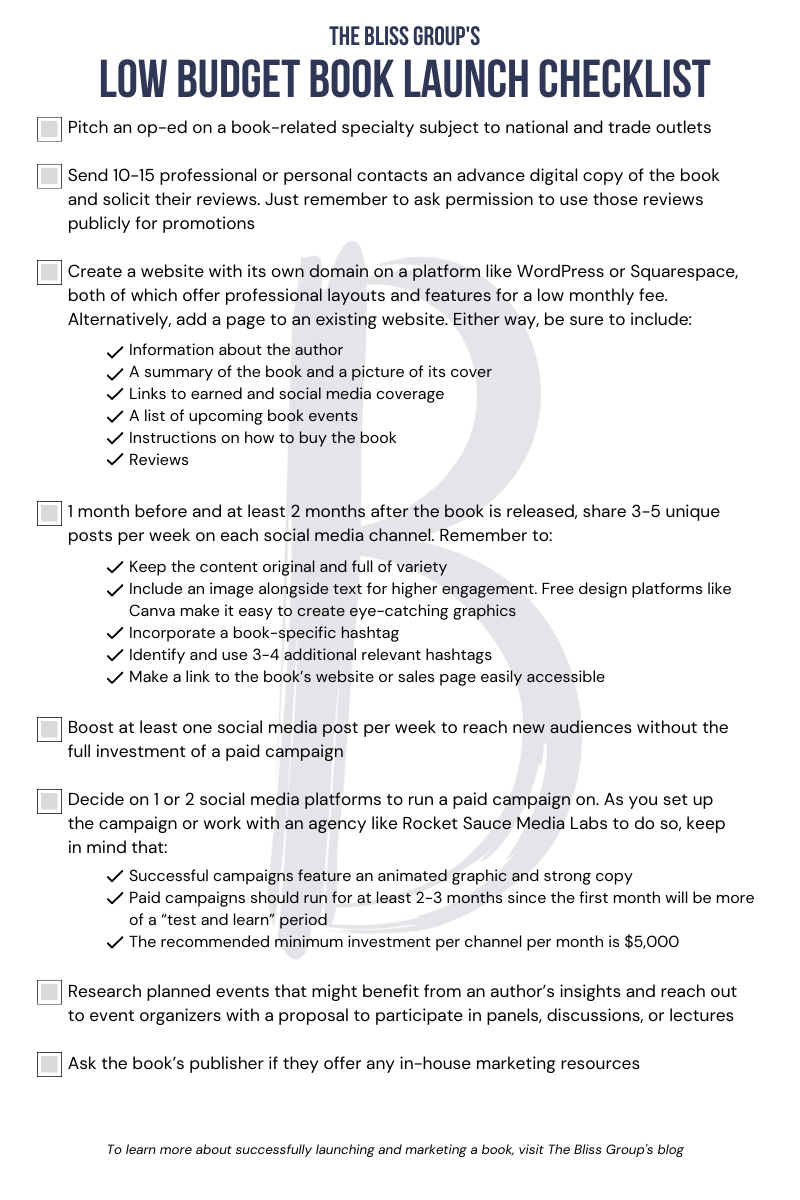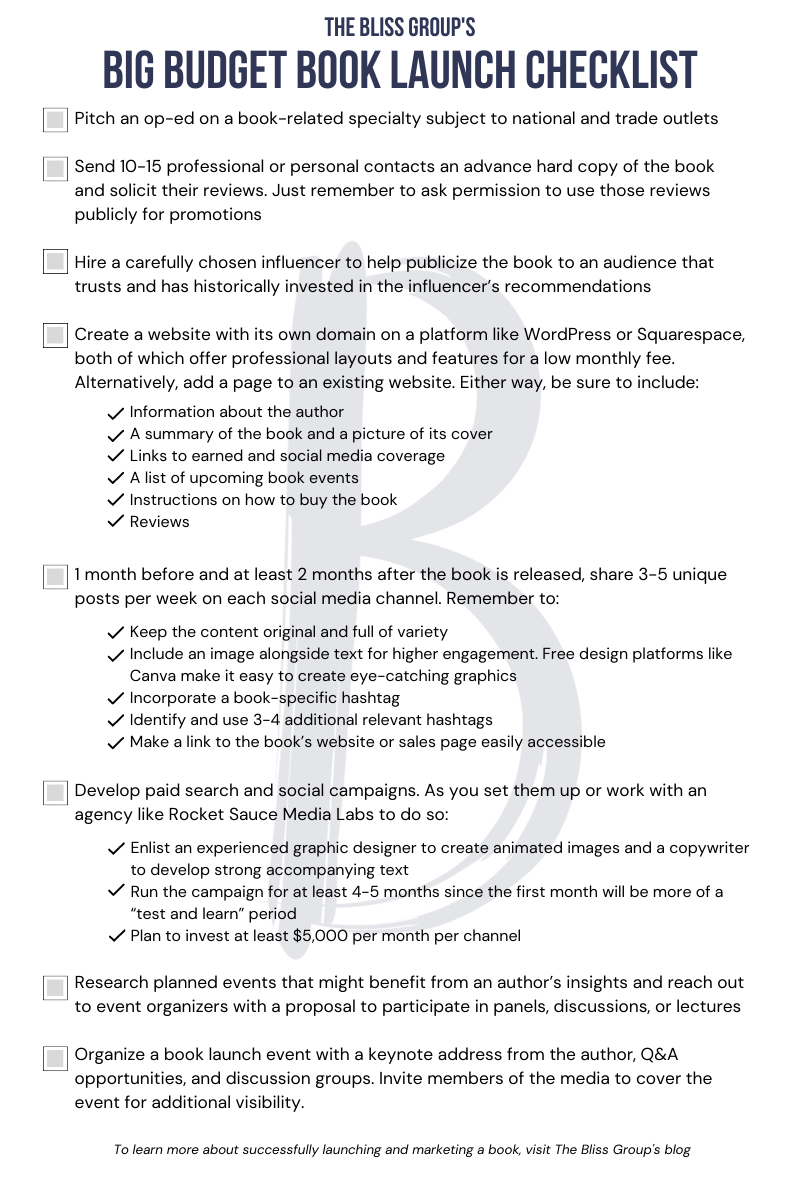3…2…1…Book Launch!
Preparing Publications for a Successful Takeoff
Although the publishing industry has been hard-hit by new technology and changing tastes, books remain a multi-billion-dollar business with the unique ability to shape perspectives and transport us away from reality. They also hold a particular appeal for leaders in almost every business; many professionals have published guides on specialty subjects to establish their own credentials while boosting those of their company or method.
Yet even authors with a very targeted or even guaranteed audience need a holistic marketing strategy to lift their book off the ground and into the right orbits. Easier said than done. Preparing, managing, and executing a successful launch ultimately requires leveraging human psychology, business interests, and personal connections. The most effective way to do so is by combining the power of traditional media relations and paid advertising with strong owned assets and engagement events.
The Launch Pad: Traditional Media Relations
While landing in the New York Times Book Review is often considered the gold standard of literary public relations, it is not the only—or necessarily the best—way to generate interest and sales. Only a very small proportion of total books on the market make it into the New York Times. The remainder find their way from bookstores to bookshelves regardless. Given how notoriously difficult it is to appear in the Book Review, time and energy is better spent focusing on other publications.
Securing opinion pieces in national and trade outlets ahead of the release date can be a great way to gain name recognition while teasing content. For nonfiction authors, this means demonstrating mastery of their field through thought leadership. Fiction writers might take a slightly different direction by publishing short stories in literary magazines or offering insights into their creative processes. Either way, the goal is to prime consumers for future material. If they like what they read, they will be more inclined to engage with related content later.
Soliciting reviews from early readers is another way to create buzz. As long as the readers have been carefully selected for their reputation or influence, giving away a few advanced copies can lead to big returns further down the road. Publicly shared commentary, before as well as after publication, lends a book and its author third-party credibility.
The Rocket Fuel: Paid Advertising
Social media channels and search engines have increasingly become pay-to-play domains, and as a result, paid advertising is the only surefire way to guarantee pre-launch visibility. Successful campaigns run for at least a few months because it takes time for algorithms to “learn” which combination of images and copy perform best for which audiences. Only after a testing period will real results emerge.
Since running campaigns across multiple channels requires considerable resources (at least $5,000 per month per platform for good results), it is always advisable to start building a paid strategy by identifying a target audience. Are you hoping to sell the book to business leaders? LinkedIn and Twitter should take priority. Are you appealing to Gen Z? Instagram and TikTok are better bets. Search ad keywords and copy should likewise be chosen carefully because words or phrases that resonate with one demographic may not have the same effect on another.
To this end, high-quality creative assets are crucial. Social media and display ads formatted as short (under 15 second) videos or GIFs are the best investments for a high return on investment. Well-written copy that aligns with graphics and includes a clear call-to-action is also non-negotiable. Both visual and written components should be refreshed periodically to avoid “ad fatigue,” or overexposure to the same messaging, which can make ads ineffective and lead to mistrust or negative associations with the book.
The Control Center: Owned Assets
Paid media might supercharge a book launch, but owned assets are the key to retaining ad-generated interest. A thoughtfully designed website can help push potential readers from being merely curious to completely enthralled. At minimum, it should include information about the author, a summary of the book, reviews, links to earned and social media coverage, a list of upcoming book events, and purchasing instructions. Paid advertisements can then drive consumers to a comprehensive control center outfitted with everything they need to prepare for takeoff.
Established social media pages with a healthy following—such as those already owned by the author or associated with a company—are also important owned assets. A steady stream of quality posts will keep the book top-of-mind for followers while allowing the author to engage with potential readers. Hosting a live discussion on Facebook or Instagram, answering crowd-sourced questions on TikTok, and creating a book-specific Twitter hashtag to encourage dialogue are all creative ways to promote engagement. Not all of these approaches are appropriate for every publication, but they are a good starting point for thinking about how to capture interest without sharing the same “Buy My Book” post every day. As with paid media, content needs to remain fresh and exciting to halt scrolling thumbs in their tracks.
The Landing Gears: Engagement Events
Post-publication book tours aren’t the only way to maintain altitude following lift-off. While visiting major cities armed with fresh copies and a few flyers can help book sales, participating in carefully chosen events can be more cost- and time-effective. Authors can be featured as specialists on a panel, guest lecturers at a conference, or discussion leaders for breakout groups. Even hosting a virtual book club on personal platforms can spark additional interest. These kinds of events are just another opportunity to put a book in context and welcome conversations from readers or potential readers.
While each of these four approaches can be pursued individually, real results—and reach—are only possible if they’re used together. Earned media creates awareness, paid media drives consumers further down the marketing funnel, owned media captures interest, and events push books off the shelf into the laps of participants. No space mission would succeed without a launch pad, fuel, control center, and landing gears—a book launch is no different.
Make sure you’re ready for takeoff with these budget-specific checklists:



By Annah Otis
aotis@theblissgrp.com
Photo by RODNAE Productions from Pexels
